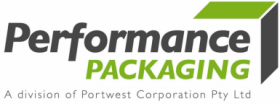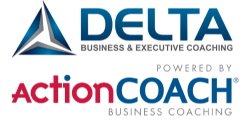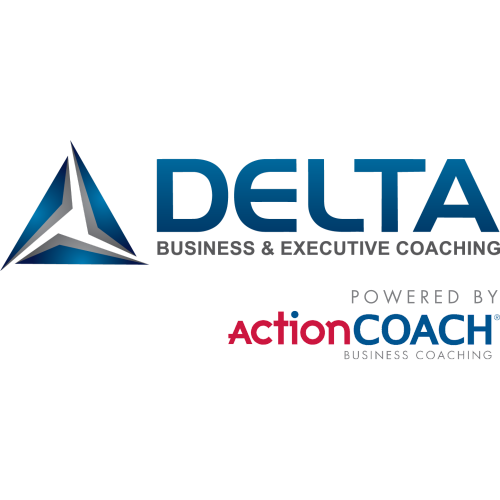
An Australian Business Number (ABN) is required if you are conducting activities in the form of a business. It is an 11-digit identification number for the government and community to identify your business and while it does not replace your Tax File Number it is required for taxation purposes.
Your ABN can be used as confirmation of your business identity, to avoid Pay As You Go (PAYG) taxes and to obtain an Australian domain name.
An ABN is free and can be applied for through the Australian Business Register.
Please visit the Australian Business Register for more information about your entitlement to an ABN.
Goods and Services Tax (GST) is a general 10% tax on most goods and services sold or consumed in Australia. You will need to register for GST if you expect a turnover of $75 000 or more, however if you will be providing taxi travel or are a car hire operator you will be required to register for GST regardless of your turnover. When you register for GST you will be required to provide your ABN.
For more information on registering for GST please visit the ATO website.
There are several other registrations involved in setting up a business, however these will depend on your business structure.
Registration of a business name
- You will need to register your business name with ASIC unless your business name if your name, a registered company is the business name or a partnership and the business name contains all of the partner’s names.
Registering your business name as a trade mark
- You can register your business name as a trade mark and check that your business name does not conflict with an existing registered trade mark through IP Australia.
Registering a domain name
- If you would like a ‘.com.au’ or ‘.net.au’ domain you are required to provide your Australian Company Number (ACN) or Australian Business Number (ABN).
Pay As You Go (PAYG)
- You will need to register for PAYG if you have employees or pay employees from another business, if you operate your business as a company, or make payments to contractors. You can register for PAYG when you apply for an ABN.
Fuel Tax Credits
- A credit for fuel tax included in the price of fuel for machinery, equipment, heavy vehicles or plants can be provided to businesses. For more information on eligibility and registration please visit the ATO.
To find out which government licences, registrations, approvals, permits, codes of practice or standards and guidelines you will require to meet your compliance obligations please visit the Australian Business Licence & Information Service (ABLIS) website.
A trust is set up through a trust deed and is structured so that the business is carried out by a trustee on behalf of the beneficiaries or trust’s members and is not a separate legal entity.
The trustee can be an individual or a company and are legally liable for the debts of the trust. The trustee must have a tax file number and lodge an annual trust return but the trust is not is not liable to pay tax, however tax is assessed to the trustee or the beneficiaries that are entitled to receive the trust net income.
There are two main types of trusts, discretionary and unit trusts. The trustee has discretion in the distribution of funds to each beneficiary for a discretionary trust while for a unit trust; the interest in the trust is divided into units and their distribution is determined by the number of units each member holds.
Every business will have different requirements for accounting software, so when choosing accounting software you should consider:
- does the system calculate all payroll requirements (PAYE, annual leave, long service leave etc.)
- will the system be able to handle multiple bank accounts
- does the system track stock, work in progress, orders, jobs and other task management requirements
- does the system track separate financial records for each business or department within the business
- does the system allow for interface with other computer systems such as online payments
- does the system need to handle foreign currency
- is a Customer Relationship Manager system incorporated into the system for records on customers including what they buy, how often they buy, when they buy.
Some accounting systems commonly used by small businesses are:
- MYOB
- Quicken/QuickBooks
- Reckon One
- Sage
- Xero (online)
- Cashflow Manager
- Nominal
- Saas (online)
A partnership agreement is a legal document that defines each person’s rights and responsibilities along with provisions for running the company, inclusive of both day-to-day and also in the event of a death or if the company dissolves. It is one of the most important things to do before you start investing time and money in a joint venture. Some things to consider for your partnership agreement:
- Decision-making: Talk about and decide how you will make decisions, especially for those cases when it’s important and there is no consensus.
- Capital Contribution: This is the section which states much money each person is putting in to start the business and a plan should be in place in the event that the initial influx of money is not enough to carry you through to profit.
- Salaries/Distributions: When will the partners be able to take money out of the business? Will partners ever get re-paid for the investments they put in, if so, when? You and your partners should be in agreement about the ways the money should be allocated among the owners.
- Death/Disability: Insurance, trusts, and wills all come into play, so you’ll have to think about who in your life you trust to make decisions on your behalf; who would inherit your shares of the company; and would you want your beneficiaries to have a say in what happens to the company.
- Dissolution: What will happen if one of the partners doesn’t want to be involved anymore, it’s a good idea to think ahead to a time when you and your partner(s) may not be in agreement about the business.
Small businesses and business startups don’t usually have the luxury of outsourcing marketing to professionals, but there are a few inexpensive marketing practices available:
- Gain Coverage: Gaining coverage in local papers, trade magazines and websites can greatly increase name recognition and educate people about your business.
- Increase lead generation and customer engagement with email marketing: Email can be one of the most effective digital marketing tactics, you can start a customer newsletter that contains information about your business and special promotions.
- Leverage social media: It’s free to get started and offers a massive network of potential customers. The hard part is increasing your followers without wasting your precious time, but the trick is to make sure you focus on value over volume, by sharing information that’s useful, interesting and shareable.
- Stand on the shoulders of your customers: Satisfied clients can be a business’s best marketing tool; share your customers positive feedback.
- Network: Networking does require time and it doesn’t give instant gratification, however a strong network is one of the greatest assets any business owner can have.
A business plan is a written description of your business’s future; describing what you plan to do and how you plan to do it and are constitutionally strategic. Starting from now with certain resources and abilities and goes to a point in the future (possibly five years) when your business will have a different set of resources, abilities, greater profitability and increased assets. Your business plan shows how you will get to that point. Consider the topics in the below structure:
The Executive Summary: Describes the legal entity and ownership structure with an overview of start-up costs and funding. The executive summary should also touch on the location and history of your business, facilities and equipment, legal structure, and insurances.
Products and Services: This section should describe the products or services you offer, try to add Emphasis on why buyers purchase your products or services and what benefits they get.
The Industry and Market Analysis: This section should communicate your target market; including market demographics, market growth, trends and forecast. It should also indicate the nature of your industry and your competition.
Strategies, Mission, Objectives and Milestones: Define your milestones with dates, budgets and specific responsibilities and be sure to include marketing strategies and advertising.
Management Structure and Staff: In this section you should name and characterise the key members of your team as well as list out management team gaps and show how they’re being addressed.
Financials: This section will incorporate details of your financial plan and needs summary, sales forecasts, annual income and expenditure along with profit and loss statement, cash flow statements and balance sheet.
Information Systems and Controls: This section should describe your business management software solutions and detail your Information technology (IT) infrastructure.
When starting a business, having insurance can help reduce your risk and allow you to succeed in the future. Your insurance requirements will vary according to the type of business you have, but be aware that some forms of insurance are compulsory for all Australian businesses. Here are a list of insurances to consider:
General Liability Insurance: The policy provides both defense and damages if you, your employees or your products or services cause or are alleged to have caused injury or property damage to a third party.
Property Insurance: If you own your building or have business personal property, including office equipment, computers, inventory or tools you should consider purchasing a policy that will protect you against damages such as fire, vandalism, theft, smoke damage etc.
Business owner’s policy: A business owner policy consists of all required coverage a business owner would need, such as business interruption insurance, property insurance, vehicle coverage, liability insurance, and crime insurance . Based on your company’s specific needs, you can alter what is included in your policy.
Commercial Auto Insurance: With this policy you can protect vehicles that carry employees, products or equipment as well as insure your work cars, SUVs, vans and trucks from damage and collisions.
Worker’s Compensation: Worker’s compensation provides insurance to employees who are injured while at work. This type of insurance provides salary replacement and medical benefits to those who are injured while working. It’s very important to have worker’s compensation insurance because it protects you and your company from legal complications.
Professional Liability Insurance: This type of policy provides defense and damages for failure to or improperly rendering professional services. Your general liability policy does not provide this protection, so it is important to understand the difference.
Directors and Officers Insurance: This type of insurance protects the directors and officers of a company against their actions that affect the profitability or operations of the company. If a director or officer of your company, as a direct result of their actions, find themselves in a legal situation, this type of insurance can cover costs or damages lost as a result of a lawsuit.
Data Breach: If your business stores sensitive or non-public information about employees or clients on their computers, servers or in paper files, you are responsible for protecting that information. If a breach occurs a Data Breach policy will provide protection against the loss.
Homeowner’s Insurance: This type of insurance can protect you against damage to your home and against damage to items inside the home, this policy is also applicable to home-based businesses.
Renter’s Insurance: Renter’s insurance is a sub-set of homeowner’s insurance which applies only to those whose who rent the property where they operate their business. The coverage is protects against damage to the physical property, contents of the property, and personal injury on the property.
Life Insurance: If you have life insurance, the insurer pays a certain amount of money to a beneficiary upon your death. Having a life insurance policy means that your loved ones will not be burdened financially upon the event of your death.
Personal Auto Insurance: Personal auto insurance covers all road vehicles (trucks, cars, motorcycles, etc.) and can provide enough coverage for some businesses, especially if you’re also driving your vehicle for personal use.
A business model defines how you:
- Identify your market;
- Define and differentiate your products;
- Get and keep customers;
- How you promote & distribute your product or service;
- How you define what needs to be done;
- The way you will set up your resources; and
- How you’re going to make a profit.
If you have an idea for a business, you should consider the following elements to help determine your best approach:
- Market Potential: Determine how big the market could be for your idea; there’s nothing wrong with going into a narrow niche, but you might build a different business if there is a greater potential.
- Competitive Landscape: Consider who else is already doing what you want to do; identify and understand your competition.
- Ideal Customer: Define the characteristics of the customer you intend to serve to get a better view of the size of the market and how to best access it.
- Unique Selling Position: Describe the benefit of what you have to offer, how you can solve your customer’s needs and what distinguishes you from your competition.
- Distribution Channels:– There are so many ways to get your product, service or idea to market and a distribution channel is a crucial decision for your business as profit and expenses can be dependent on a model that fits.
- Revenue Streams: Your business will have a core way of making money, but a strong business model should also consider alternate ways of making money.
- Strategic Relationships: Some businesses rely on formal alliances with other businesses to combine resources, knowledge, expertise and sometimes, finances to conduct specified activities or processes in an effort to achieve a collective goal.
Some of Our Clients




